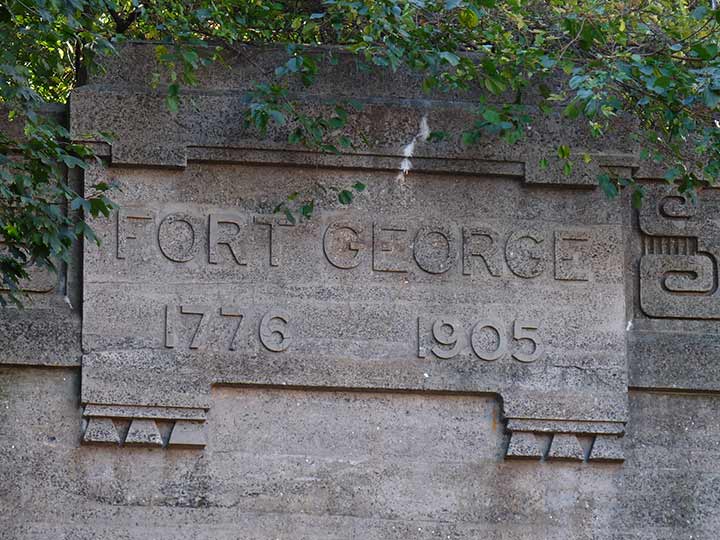
THE Dyckman Street station on the #1 train, Dyckman Street and Nagle Avenue, is among my favorites, because it emerges from a tunnel into the light, like Brooklyn’s Parkside Avenue station and the Hunters Point Avenue station in Queens. Unlike those two statins, though, the Dyckman Street platform is entirely outdoors.
Dyckman is a big name in upper Manhattan — bookkeeper Jan Dyckman arrived on these shores from Westphalia (then under Prussian control) in the late 17th Century, married into the Nagle family and gradually controlled much of upper Manhattan Island. His descendants were prominent US patriots — the British burned down the original Dyckman homestead at what became Broadway and 204th Street, and his great grandsons built the farmhouse that still stands today.
The tunnel is labeled with the chiseled sign “Fort George 1776 1905.” The first date refers to Fort George, originally Fort Clinton, which was built by US patriots at about where George Washington High School stands at Audubon Avenue and West 192nd Street. Though the British eventually captured the fort, Colonel William Baxter and his Bucks County Pennsylvania militia were able to hold off British general William Howe’s troops long enough for Washington’s troops to escape to New Jersey (much of the Revolutionary War in 1776 in the NYC area consisted of Washington escaping to fight again). The second date refers to the date that the tunnel was completed.
More from this part of town on this FNY page.
Check out the ForgottenBook, take a look at the gift shop. As always, “comment…as you see fit.” I earn a small payment when you click on any ad on the site.
5/15/25


1 comment
The Fort George IRT #1 train tunnel north end clearly shows the roller-coaster topography so common in Upper Manhattan. The tunnel itself traverses the base of the large hilly area stretching for about two miles, from about 160th Street to Dyckman Street. The station immediately south, 191st Street, has platforms 180 feet below street level and is the deepest station in the entire subway system. A half-mile north the #1 trains, remaining level, emerge from the earth just south of Dyckman’s platforms. The portal is at the base of Fort George Hill, which drops nearly 200 feet at this location, allowing the trains to emerge into daylight. Immediately east of this station, along the uptown platform, is Fort George Hill, a steep street that connects Dyckman Street to the north end of St. Nicholas Avenue, a major north-south thoroughfare in Harlem and Washington Heights.
Fort George tunnel looks like a mountain railroad portal that is more common in hilly rural areas of the United States. Amazingly it was built in 1906 as part of the original NYC subway route, and required extensive blasting to remove the hard rock along the tunnel route. 120 years late it is still in daily use.